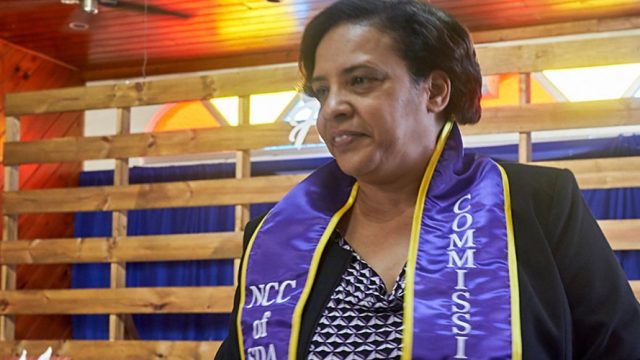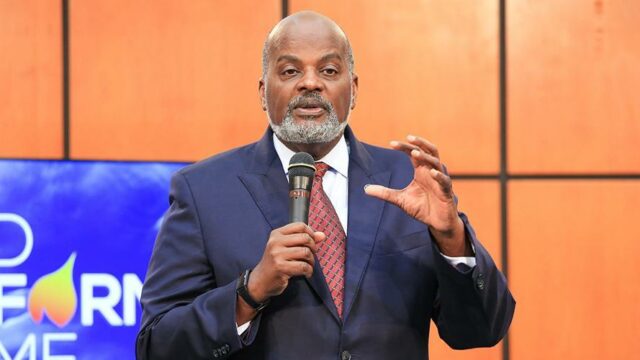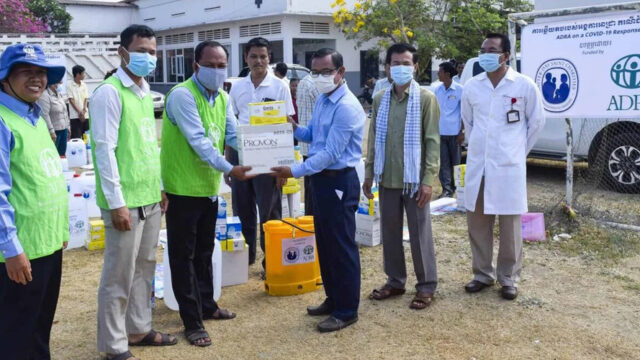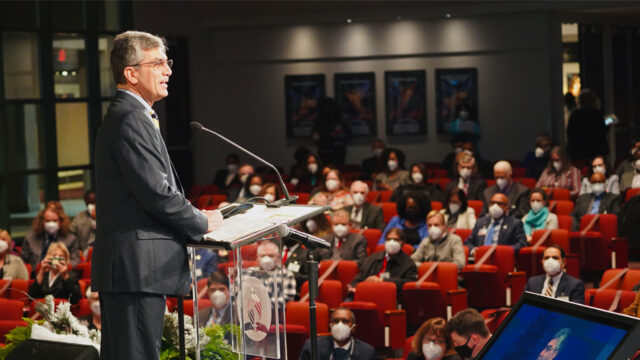Online health symposium brings Adventist experts together to offer advice, suggestions.
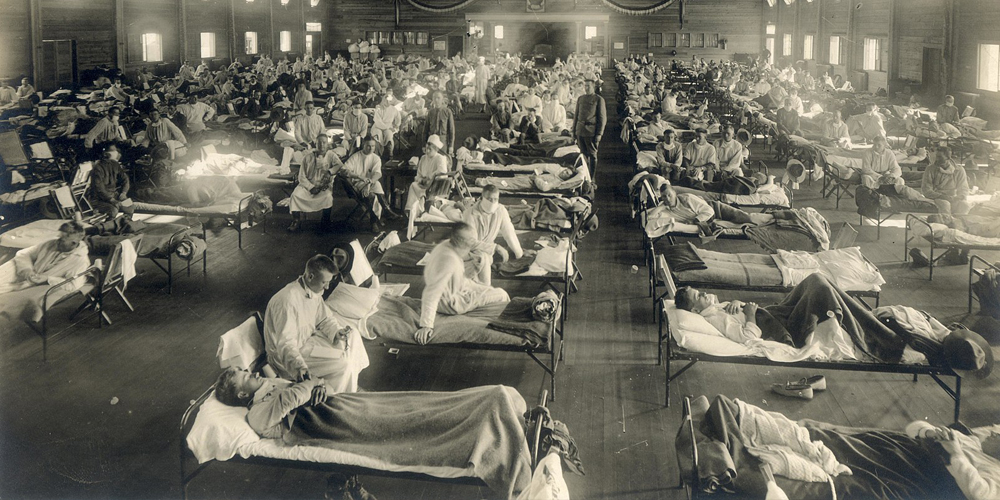
On Easter Sunday, April 12, 2020, AWR360 Health presented an online health symposium in partnership with representatives of Adventist Health Ministries of the General Conference of Seventh-day Adventists and the North American Division, Your Best Pathway to Health, Weimar Institute, Lifestyle Health Education, and others.
The focus of the event was lessons learned from the 1918 influenza pandemic and how they might apply to the current coronavirus pandemic. Hosting the event was Lela Lewis, medical director at AWR360 Health. Several medical professionals presented, and more than 4,300 people tuned in via YouTube and Facebook.
Stepping back a bit into history, the 1918 influenza (H1N1) pandemic caused approximately 675,000 deaths in the U.S. and possibly more than 50 million deaths worldwide. Current mortality numbers for COVID-19 are nowhere near that magnitude, sitting at just over 138,000 worldwide, with approximately 28,000 in the U.S., as of the writing of this article.
The reason for the level of devastation caused by the 1918 H1N1 virus is still not fully understood. Uniquely, this virus caused a high mortality rate in people ages 20 to 40 who were otherwise healthy. No vaccine was available to protect from influenza and no antibiotics to treat secondary infection; treatments were limited to “isolation, quarantine, good personal hygiene, use of disinfectants, and limitations of public gatherings, which were applied unevenly.”
Sound familiar?
“At the time, army camps in the U.S. were considered to offer the best quality health care,” said Neil Nedley, president of Weimar Institute, who presented a segment comparing death rates in army camps and Adventist sanitariums throughout the 1918 pandemic.
While the U.S. Army followed traditional medical methods of treatment, doctors and nurses in the sanitariums followed the example of John Kellogg, using hot and cold fomentations — the beginnings of what we know as hydrothermal therapy. The H1N1 death rate in army camps was 6.7 percent. The death rate of those treated in sanitariums using Kellogg’s methods was 1.34 percent.
“In fact, of the 90 seminary dormitory students diagnosed with the H1N1 virus and treated using Kellogg’s fomentations, zero developed pneumonia, and zero died,” Nedley reported.
In response, a city health official stated, “This record is remarkable. It makes the ordinary methods of dealing with the flu appear irrational.”
But was hydrothermal therapy actually the reason behind these drastic differences in death rates?
“There are still a lot of important questions to answer,” said Zeno L. Charles-Marcel, associate director of health ministries for the Seventh-day Adventist Church. “Were the diagnoses accurate? Were the resources available where people were treated the same or significantly different? Were the patients treated indoors or outdoors? And, of course, Would this happen with COVID-19?”
Despite this novel coronavirus being relatively unstudied before 2020, health professionals worldwide have been collecting and reporting significant data for close to six months. And a lot of the data focuses on immune systems.
Roger Seheult, pulmonologist and intensivist, pointed out that humans are born with two immune systems — the innate and the adaptive.
“The innate immune system gives you a fever and eats up molecular patterns that look abnormal, then presents the patterns to the adaptive system so it can recognize it in the future,” he explained.
It is known that SARS and MERS suppress the innate immune response, then allow it to go into overdrive. This leads some researchers to believe that COVID-19 may “dampen antiviral IFN responses, resulting in uncontrolled viral replication,” Seheult said.
He continued, “SARS is allowed to progress because the innate immune system is not strong enough. Strengthening that system might be a good way to fight COVID-19.”
What followed was a list of methods to boost one’s immune system: eating nutritiously; avoiding sugar; spending time outside; getting seven-plus hours of sleep each night; and drinking plenty of water.
It’s that last part which has the medical community talking: water — and specifically, hydrothermal therapy, today’s modern version of Kellogg’s hot and cold fomentations.
“While we want to see success with this treatment in infected persons, we also want to prevent anyone else from getting ill in the first place,” Charles-Marcel added. “We need to enlarge our toolkit, so we have options not just for defense but for offense as well.”
Eric Nelson, assistant professor in the Department of Surgery at the University of Tennessee College of Medicine Chattanooga, recently received approval to study Phase 3 of COVID-19, utilizing the fomentation-style treatment for affected patients.
This treatment involves wrapping the patient in heating pads and placing a cold cloth on the patient’s head. This is maintained for 25 minutes, during which time the patient’s skin and systemic temperatures are continually monitored. When the heat is removed, the patient immediately undergoes a brisk rub-down with cold, moist cloths. This is what is referred to as the “thermal lock” because it restricts the expanded blood vessels so quickly that the heat is trapped inside the body, raising the core body temperature to around 104 degrees Fahrenheit (40 degrees Celcius).
“Our goal with this trial is to activate the presumed immune-modulating benefits of hydrothermal therapy,” Nelson said. “I believe the sudden temperature changes induce at least a de-margination of white blood cells, and perhaps this allows them to redistribute throughout the body.”
Raising the core temperature of the patient follows a model set by Julius Wagner-Jauregg, who won the Nobel Prize in Physiology or Medicine in 1927 for his work treating neurosyphilis by introducing malaria to the patient. This raised the patient’s core temperature, giving them a fever, which in turn cured or alleviated paralysis and killed the infection.
“COVID-19 is the perfect virus to test this on,” Seheult said. “Since SARS seems to suppress fevers more than normal, increasing the body temperature using whatever tools available could help in the treatment and stopping the spread of COVID-19.”
A successful treatment/intervention for COVID-19, as outlined by Seheult, must:
- be complementary with current medical care
- be scalable to millions of people right away
- not require a test or pharmacy
- be easily accessible (consider prison or refugee camps, and countries without access to the type of health care available in the U.S.)
- have minimal side effects
“Hydrothermal therapy fits every single one of those criteria,” Seheult pointed out. “It looks very plausible that we could get some mileage out of this method of treatment, and if we are successful, we could reduce the number of people requiring hospitalization from 20 percent to 15 percent. That’s significant.”
Basic fomentations can be conducted at home for healthy persons or individuals beginning to feel symptoms, said John Kelly, president of the Adventist-run Oak Haven and founder of the American College of Lifestyle Medicine. Utilizing a towel dipped in hot water (being careful to not burn the skin) covered by a heating pad, drinking warm water then rubbing down with a cold, moist cloth, or taking a cold shower after a cardio workout are all ways to convert this hospital treatment into a home remedy.
“Everyone is racing to find a vaccine — a medicinal cure,” Charles-Marcel said. “We have this method, and a plausible, scientifically demonstrable reason to think it works. This is useful, helpful, and relatively low risk. Research is needed, but hydrotherapy probably won’t hurt, and it may help. What have we to lose?”
Near the end of the presentation, Mark Finley, who serves as assistant to the president at the Seventh-day Adventist Church’s headquarters, delivered a message of encouragement to those fighting on the front lines — the doctors and nurses and researchers putting their lives on the line to save ours.
“I have been asked many times where God is in all of this,” Finley shared. “I respond that He is in the heart of every physician and nurse ministering on the front lines in love. He is in the heart of every loving neighbor who shows love to their community. I salute all of you.”
A brief question-and-answer session wrapped up the symposium, and Angeline Brauer, director of health ministries for the North American Division, closed the session with prayer.
“We’ve heard history, modern research, potential mechanisms of action to confront COVID-19, and we have some better questions to ask,” Brauer concluded. “I believe we have a viable option to pursue, and I also believe we can find hope in what we’ve heard today.”
The original version of this story was posted by Adventist News Network.


